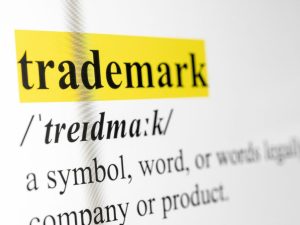 Recently, the Delhi High Court passed an interim injunction order against defendants who were found to be using the ABBZORB mark for the same class of goods in which the plaintiff had prior registration.
Recently, the Delhi High Court passed an interim injunction order against defendants who were found to be using the ABBZORB mark for the same class of goods in which the plaintiff had prior registration.
The plaintiff, Sun Pharmaceutical, holds registrations for trademarks ‘ABZORB’, ‘ABZORBEC’ and ‘ABZORB SYNDET’ since 2008 and is using them for anti-fungal pharmaceutical preparations. The defendants also had registrations for ABBZORB and ABBZORB NUTRITION in classes 29, 30, 31 and 32. However, the defendants are using ABBZORB NUTRITION for whey protein, which falls in class 5. So, the defendants’ use is not consistent with its registrations and goods covered therein. Their attempt to get registration for ABBZORB in class 5 has not been successful.
The plaintiff’s counsel pleaded phonetic identity between the set of marks and that the defendant has secured registration in irrelevant classes, malafidely using it for class 5 products and has been making dishonest attempts to secure registration for ABBZORB in the same class in which the plaintiff’s registration exists.
The defendant’s counsel defended the position by pleading that the mark ABZORB was not registerable as it was a mere variant of the common English word. The price difference between respective products is quite obvious, with specified intended use for different consumer sections. Another defence suggested was that if one was to be confused, it is the plaintiff’s product that would cause harm and not the defendant’s, i.e., if someone, owing to confusion, applied whey protein on a fungal infection, nothing adverse would happen except non-addressal/healing of infection. However, if someone consumes an anti-fungal preparation, confusing it to be whey protein, it would cause serious adverse consequences.
The Court observed the provision of Section 29 for the purpose of infringement. It states that if a mark is compared to another mark, there is the likelihood of confusion or deception or a presumption of association, and there is infringement. This possibility of likelihood (not actual) of confusion has to be assessed from the point of view of a consumer of average intelligence and imperfect recollection who seeks the marks at different points of time and not side by side comparison. Adding dissimilar features may become insignificant when textual elements are deceptively similar. Thus, the defendant’s plea that labels and overall appearance of the two products are different doesn’t find much merit in defence against a claim of infringement. The plaintiff’s plea that two sets of marks (ABZORB and ABBZORB) are confusingly and deceptively similar is acceptable, and there is every likelihood of the consumer confusing one product for the other. It was concluded that a prima facie case of infringement exists.
It was further observed that the defence under Section 30(2)(e)10 that where a registered mark is used, such use cannot be treated as infringing in nature, also doesn’t rescue the defendant case since their mark is not registered in class 5 and their use pertains to class 5 product. This reinforces the need for consistency between trademark registration and product use.
The Court also struck out the defendant’s plea that ABZORB was not a registerable mark, being a variant of the common English word since the defendant applied to register the ABBZORB mark. Moreover, there is no prohibition on securing registration for common English words for unrelated products, as done by the plaintiff. The Court supported the plaintiff’s plea on the dishonest intention of the defendant since the latter became aware of the plaintiff’s ABZORB mark during the prosecution phase of the latter’s ABBZORB trademark application and yet used their impugned mark for class 5 products.
The Court accordingly injuncted defendants from using ABBZORB and ABBZORB NUTRITION marks for dietary/ health supplements, nutraceuticals, etc.
This order showcases that consumer confusion is a prime deciding factor in assessing infringement. The Court facilitated the prevention of consumer confusion in the marketplace by carefully evaluating the likelihood of confusion between the plaintiff’s and defendant’s marks. It emphasised the importance of assessing potential confusion from the viewpoint of a consumer having average intelligence and imperfect recollection of seeking products/marks at different times.
Authors: Manisha Singh & Akanksha Kar
First published by Lexology here



